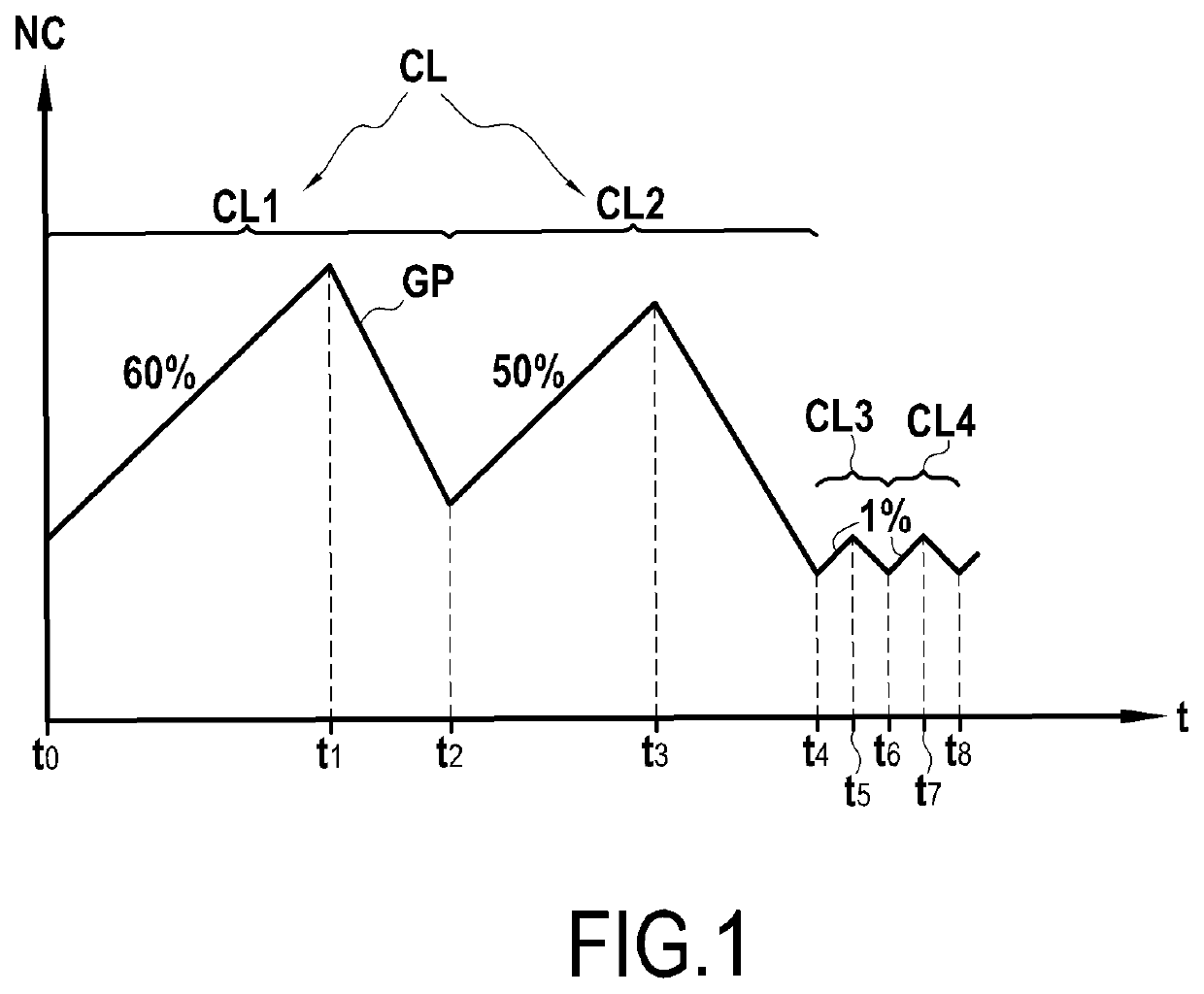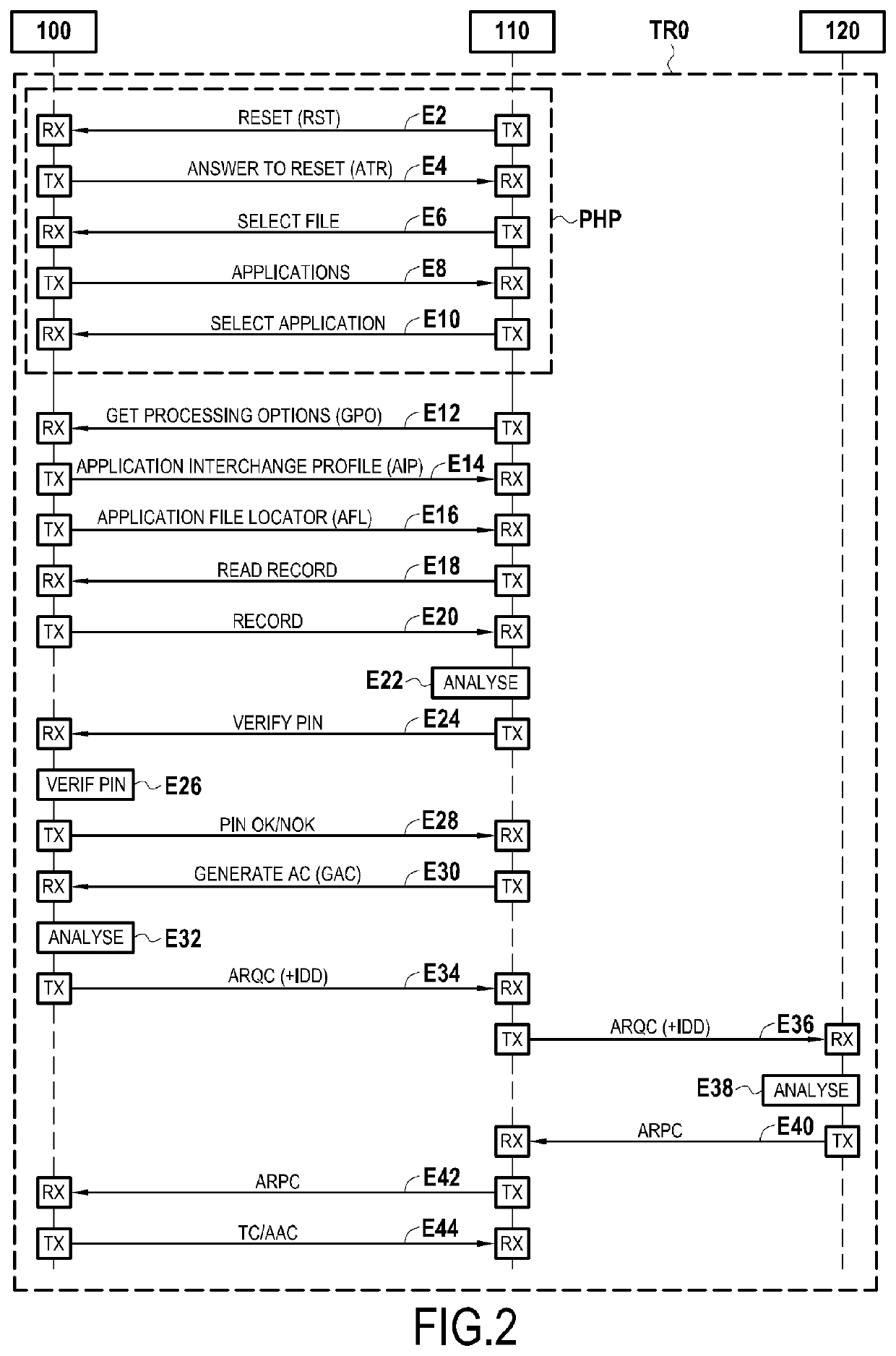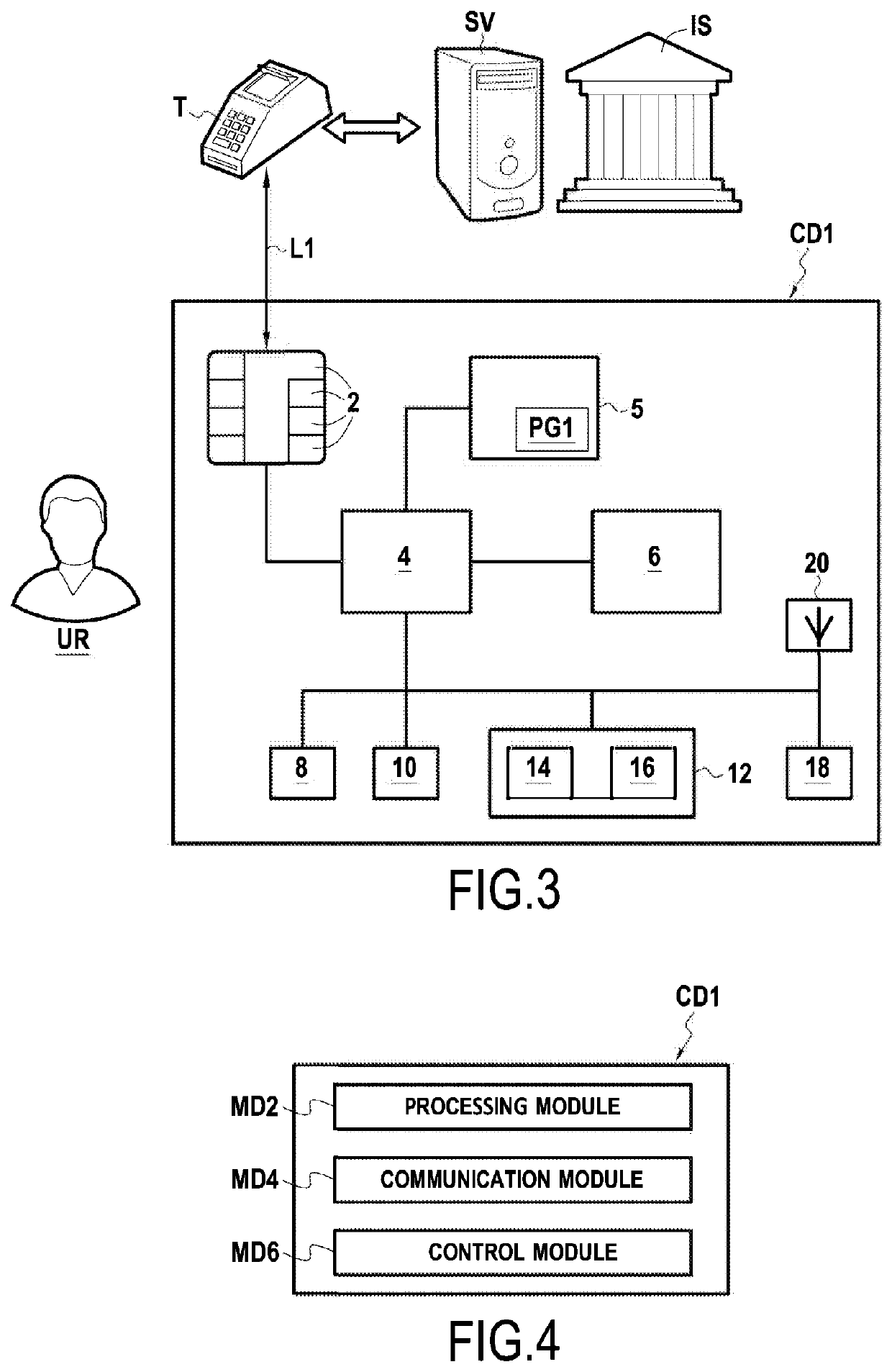Recharging an embedded battery in a smart card
- Summary
- Abstract
- Description
- Claims
- Application Information
AI Technical Summary
Benefits of technology
Problems solved by technology
Method used
Image
Examples
Embodiment Construction
[0077]As indicated above, the invention relates to the management of the power supply in a smart card (also called “microcircuit card”) embedding a rechargeable battery, and relates more particularly to the electrical recharging of such an embedded battery.
[0078]The invention proposes to optimize the electrical recharging process of an internal battery with which a smart card is equipped.
[0079]The invention, according to various embodiments, relates to a control method implemented by a smart card embedding at least one rechargeable battery. The smart card can process a transaction with an external terminal and, upon detection of a predetermined transaction command coming from the external terminal, the smart card is configured to trigger the recharging of the battery by using a power supply delivered by the external terminal.
[0080]Particularly, the invention aims a control method implemented by a smart card including a rechargeable battery, the method comprising: a processing of a t...
PUM
 Login to View More
Login to View More Abstract
Description
Claims
Application Information
 Login to View More
Login to View More - R&D
- Intellectual Property
- Life Sciences
- Materials
- Tech Scout
- Unparalleled Data Quality
- Higher Quality Content
- 60% Fewer Hallucinations
Browse by: Latest US Patents, China's latest patents, Technical Efficacy Thesaurus, Application Domain, Technology Topic, Popular Technical Reports.
© 2025 PatSnap. All rights reserved.Legal|Privacy policy|Modern Slavery Act Transparency Statement|Sitemap|About US| Contact US: help@patsnap.com



